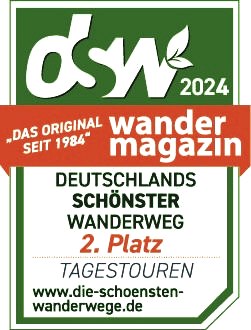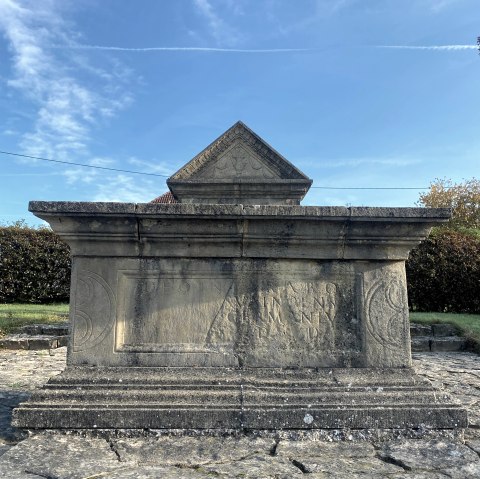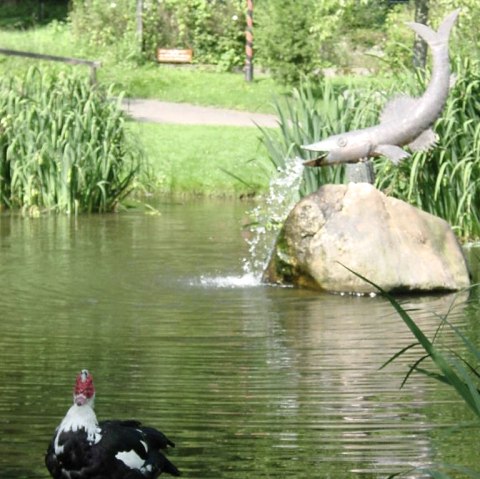Weilerbach Castle and Ironworks
Bollendorf
Emmanuel Limpach, the last abbot of Echternach, had the elegant late Baroque castle near Bollendorf built in 1780. The double coat of arms carved in stone in the centre gable of the castle façade provides information about the lord of the house, and the grimaces above the windows, which ward off gloom, indicate that the building was a summer residence, a pleasure palace.
A path leads to the elevated gardens with pavilion, terraces and a fountain house. However, numerous other buildings can be seen in the vicinity of the castle, most of which are now in ruins. They bear witness to the fact that Abbot Limpach was not only a cheerful man, but above all a businessman: his castle also served as the administrative centre of the newly built, large ironworks on the Weilerbach. How did this come about?
Before he was elected abbot in 1775, the technically minded monk Limpach had been in charge of the operation of a small but not very successful ironworks on the Sauer above Bollendorf, today's Altschmiede. Between 1777 and 1779, he then had a new, larger ironworks built on the Weilerbach and a year later the castle, built according to the plans of the Tyrolean master builder Paul Mungenast.
The partially rebuilt remains of the 18th century cutting mill, smelter, moulding shop and slag potting plant can still be seen today and can be visited on guided tours. The pond between the castle and the ironworks was originally used to supply energy. The gatehouse opposite the castle and the former coach house, now a museum café, also date back to the founding of the ironworks. The former ironworks foreman's house is located near the road to Bollendorf.
Abbot Limpach devoted himself so intensively to the expansion of the ironworks that the monks of his abbey complained about him to the Elector of Trier; he later had to retire from business life. The castle and ironworks were nationalised after the invasion of the French Revolutionary troops in 1794 and sold to private owners a few years later. They continued to run the business successfully. Pig iron and cast iron were also produced in the 19th century, e.g. cast-iron taken plates and ovens, and later agricultural equipment. The ironworks provided employment for many families in the neighbouring villages.
The gradual decline of the Weilerbacher Hütte began after the First World War, and in 1958 operations were finally discontinued. After the castle was badly damaged during the Battle of the Bulge in 1944/45, it was left to fall into disrepair. But its fate changed: between 1987 and 1992, Weilerbach Castle was completely restored and has shone in new splendour ever since.
A museum café was set up in the former coach house (open from Easter to mid-October).
The Felsenweg 2 and Felsenweg 3 hiking trails in the NaturWanderPark delux lead past Weilerbach Castle.














